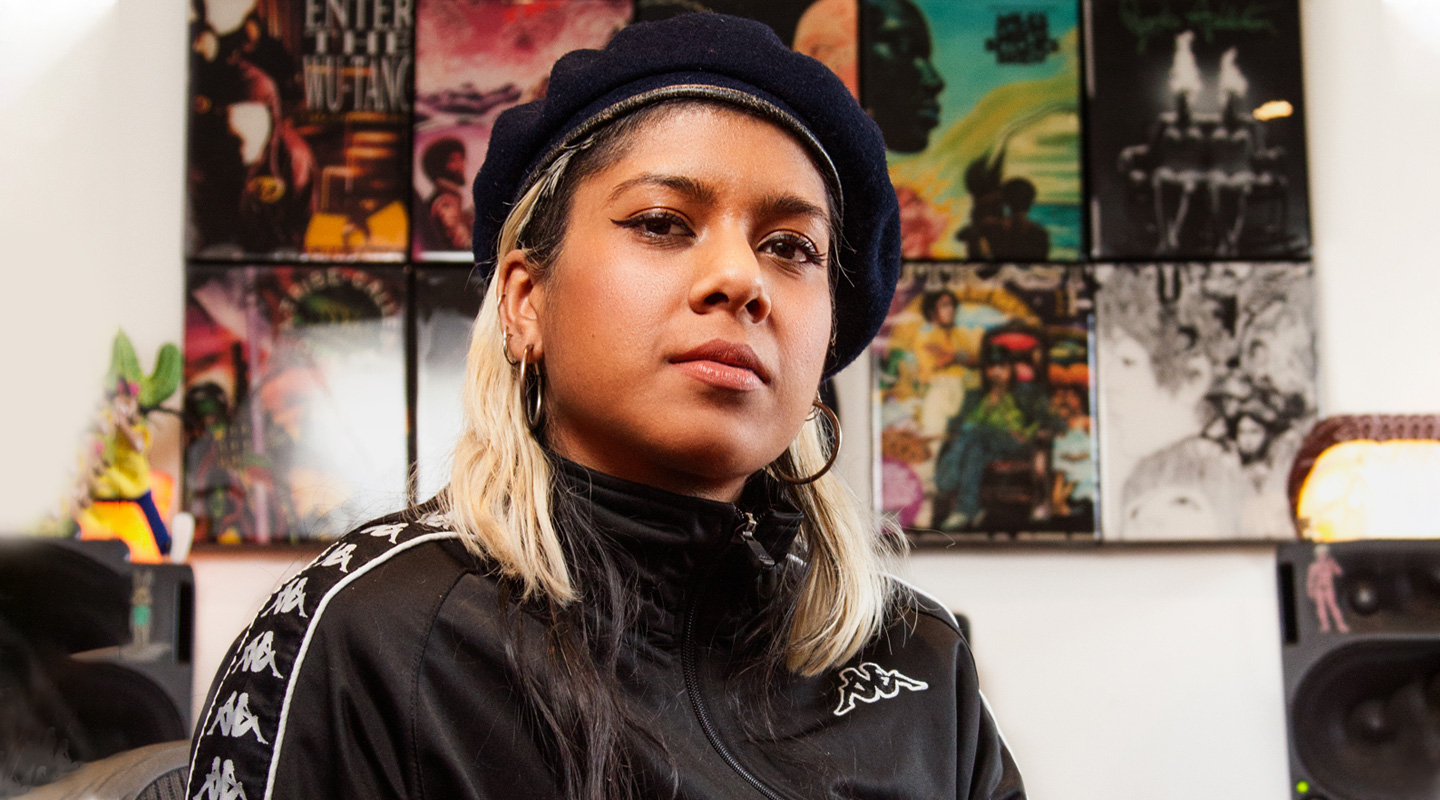
Genre Vandal
We visit Ecca Vandal’s studio to find out how she and Kidnot melt together everything from hip hop, to punk and chill wave.
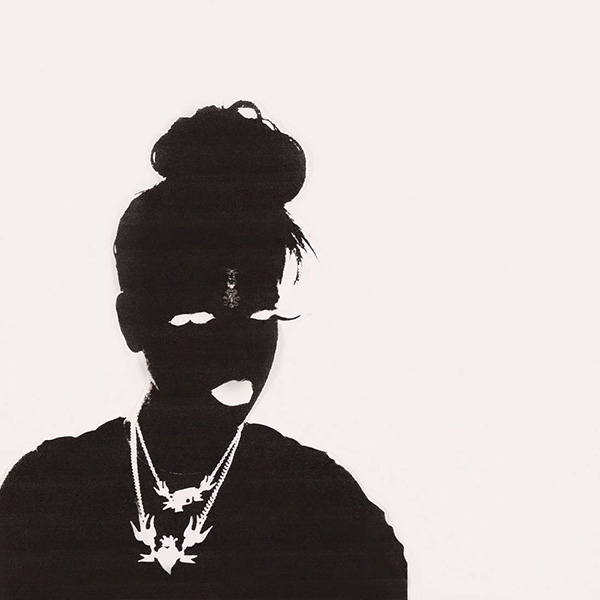
Artist: Ecca Vandal
Album: Ecca Vandal
Ecca Vandal doesn’t really fit in, and she’s okay with that. Disappointing her Sri Lankan family by pursuing a career in music mostly absolved her of any need to people please. “Coming from a Sri Lankan background, the career markers of success are very different for that culture,” she explained. “Pursuing a creative career is not an option.” Besides, she was already on the fast track into the financial sector, having accepted a scholarship to study business at Monash University.
Doing music full-time had never crossed Ecca’s mind until her high school music teacher brought it up. Once it was tabled, she couldn’t shake the thought, so she applied to study at VCA on the sly. “I did the audition in secret, and got accepted,” recounted Ecca. “I broke the news to my parents, and they took it horribly. They’re still trying to accept it. I had to accept I’d be a disappointment for a long time. Let’s face it, there’s not a secure career in music.”
ALL THAT JAZZ
Ecca’s background is primarily in jazz, but talking to her while she’s poised under an A1 Nirvana poster with a Kangol topping her half-shaved/half-grown out hair, sporting a Kappa jacket, and surrounded by racks of vintage synths — it’s hard to spot the influence.
She explains that it’s still there, manifested in the way improvisation helps form her songs. “Towards the end of the degree I couldn’t quite identify with writing original jazz music or singing standards for the rest of my life,” she explained. “If I’m writing original music, what does that sound like? I got obsessed with punk rock. I was introduced to Bad Brains, Fugazi, which opened my mind to lots of different sounds. Then I met Richie [Buxton, her flat mate, band mate, and co-producer]. We did a cover at a bar together and started talking about making original music. Then I took some time trying to see what the sound would be. I picked up a guitar — even though I wasn’t really a guitarist — and made stupid ideas in Garageband. I played Richie some demos, and he thought there was some good stuff to work on.”
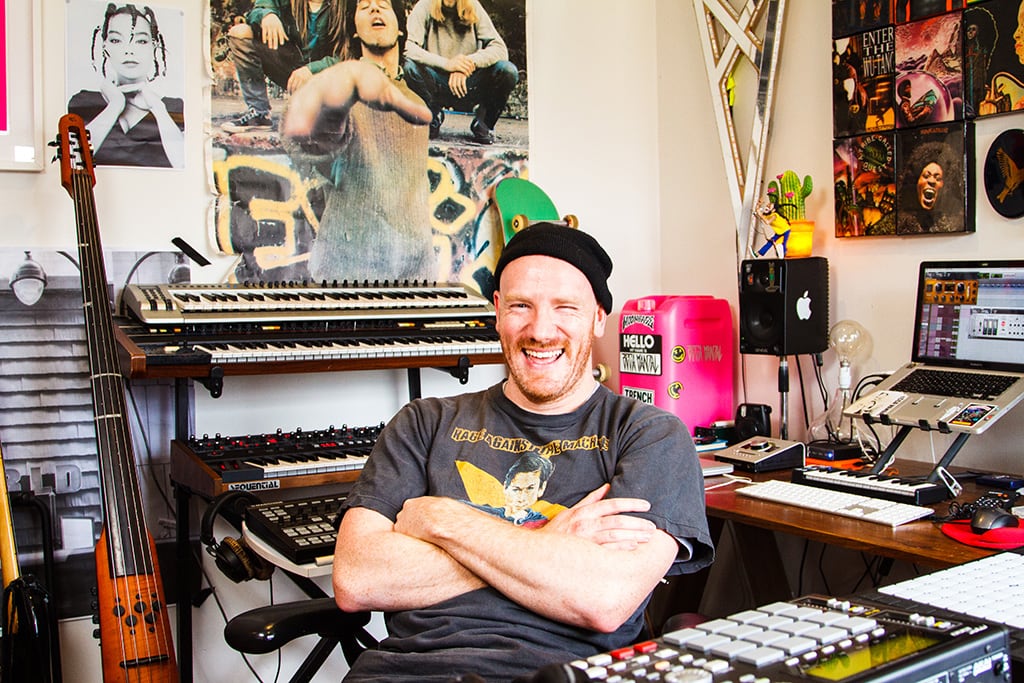
Richie: “They were terribly good!”
Ecca: “Our first single, White Flag came from that, and the first song off the album, Your Way.”
Buxton, who also produces under the moniker Kidnot, isn’t a newcomer. He’s played in hip hop bands, and did a stint playing bass for rock band Trial Kennedy during their last album. His brother Haydn — who mixed the record, and also happens to record a lot of jazz — came up through Metropolis studio, giving Richie an inside line when it came to learning the craft as well: “Haydn would just say, ‘I’m over my 001, have it.’ I learnt by writing music in my bedroom, then ringing Haydn and asking him how I’m supposed to do it. He’d look at my songs and say, ‘you’re doing it all wrong, but how you’re doing it is really quite cool.’ Just that naive approach to it.”
He currently has a day job composing music for commercials at Method Studios, though he’s gone part time as Ecca has become more serious.
“I’d worked with quite a few bands, but as soon as I heard Easy’s songs, I thought, ‘Man this is something different and fresh,’” explained Richie. “From a vocals perspective too, a lot of vocalists are narrow minded, but I could be listening to Slayer and she’s listening to Wicked by Ice Cube. Let’s mix them together! A lot of our production has been learnt by writing the songs. A lot of mistakes have been made.”
POT LUCK
Ecca’s music is a melting pot. You can tell from the mashup of fluorescent punk nicknacks, hip hop collages and grunge paraphernalia filling the entire living room studio. Cherry pick one track off her debut self-titled album and it could sound anywhere between At The Drive In mixed with No Doubt on the punky single Broke Days, Party Nights, to the slowly expanding chill wave of Cold of the World.
“It’s just about following those bread crumbs,” explained Ecca. “That’s what improvisation taught me. Just committing to a direction and allowing yourself to go there. I’m really led by melody, but rhythm and big beat is really in my blood, with traditional Sri Lankan beats, Bhangra, and southern Indian music. Then harmony, chordal harmony or distorted harmonics from a guitar, or lush Rhodes sounds… I just need to feel emotion.”
The mixed end result is also due to never starting from the same position twice. “Easy might bring in a hack guitar riff that’s so rad, then I’ll put my two cents in,” said Richie. “A song might start off with a drumbeat of mine, or Easy might hop on a keyboard and play a line and build it from there. We work in ’Tools and build everything in it, including drums. There’s no live drums on the record at all. It’s all programmed. Some drummers are like, ‘How many arms does that guy have?’”
Richie mostly uses Superior Drummer for MIDI drums, occasionally booting up Strike because he loves the built-in talkback distortion. Maschine makes an appearance every now and again to fatten up beats, or they might sample something from a synth and process it. In a somewhat upside down logic, they use MIDI to program the ‘acoustic’ drums, but always record audio back in for any electronic sounds, which requires searching through kicks and snares until they find the right one. In fact, outside of the drums, the entire record is audio — no soft synths. “We just like committing to a sound,” said Buxton. “MIDI for me creates more options. I hate that rabbit hole, I just want to get the song down. Sometimes it’s bitten us on the arse when we want to redo something but didn’t save the patch on the Prophet.”
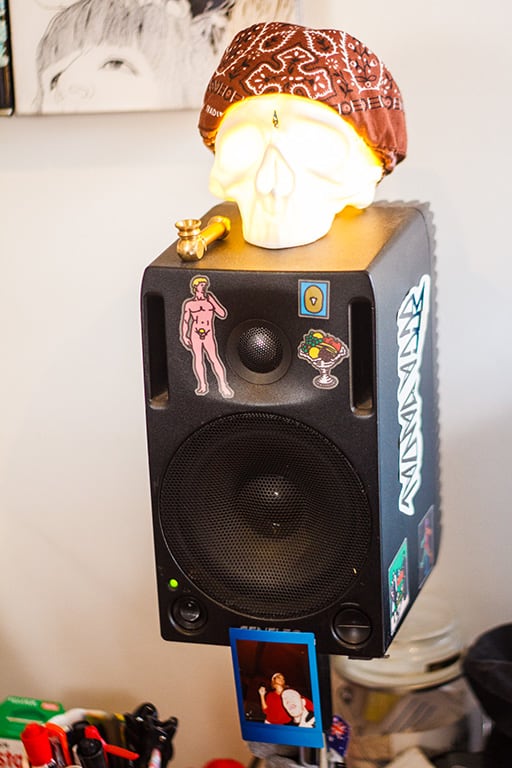
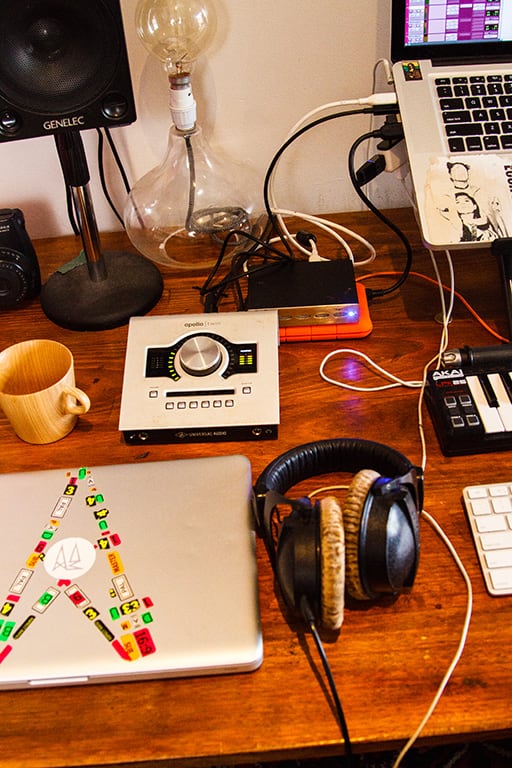
There’s no live drums on the record at all. It’s all programmed. Some drummers are like, ‘How many arms does that guy have?
BROKE DAYS, PARTY NIGHTS
The pair broke down the lead single off Ecca’s self-titled debut album, Broke Days, Party Nights, which “sums up our mindset at the time because we were f**king eating two-minute noodles,” explained Buxton. “E was just singing, ‘I’ve got no money’ over and over again. I was feeling her pain.”
“It’s brutal,” said Ecca. “We went through the gamut of emotions making this record. From ‘Why are we doing this?’ to ‘I love it and can’t think of doing anything else.’ We had a great time going to New York to write — they also shot the video there, and collaborated with Darwin Deez on Your Orbit — but I put all my savings into going, then came back to nothing and had to finish the record. It was really tough.”
The song starts off with an aggressive staccato rhythm. “The sound is from the DSI Pro2,” said Buxton. “Easy was in the other room and as soon as I put my finger on that sound she asked, ‘What the f**k’s that?’
“We were just listening to it on a loop, and played a drum beat on the keyboard. After that, we had a big argument over what the bass line should be. E won, of course, and in our mind we were thinking it would go on an EDM route. After the drums, E came up with the bass line and I doubled it with an electric bass. I picked up the guitar and added the opposite one-note parts. It started getting this Bloc Party vibe, then we found a chord progression that took it somewhere. I then added that guitar over the section. E wanted the angular guitar, I’m often using the Friedman amps on UAD , and this was the Tele through the UAD Roland Chorus Ensemble CE-1 . I just committed to the ’90s Nirvana type sound I wanted. I’ve got a little Orange amp, but the UAD Apollo gear sounds so good. We did a little bit of live tracking at my work, and I tracked the bass through an amp as well, which gels it a bit.”
“We added that At the Drive In-style chaotic drum part, which took quite a bit of programming. A lot of it was going through the drums making sure it wasn’t a loop. I hate quantising. We will move a kick if it’s standing out, E has great ears.”
“It’s just I want to make it sound human,” she said. “If we want it to sit back we’ll go through it and make sure it’s in the pocket. Sometimes if it’s a driving beat we’ll be a bit more towards the grid, but it’s never quantised because I don’t think it sounds human.”
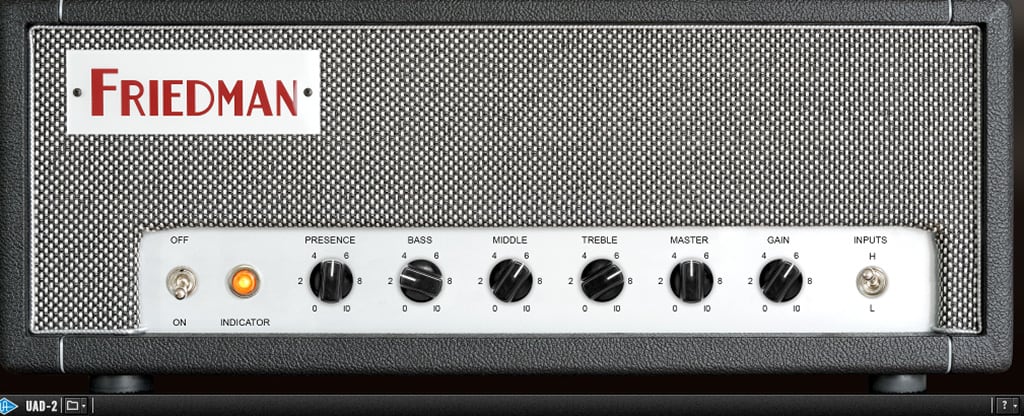
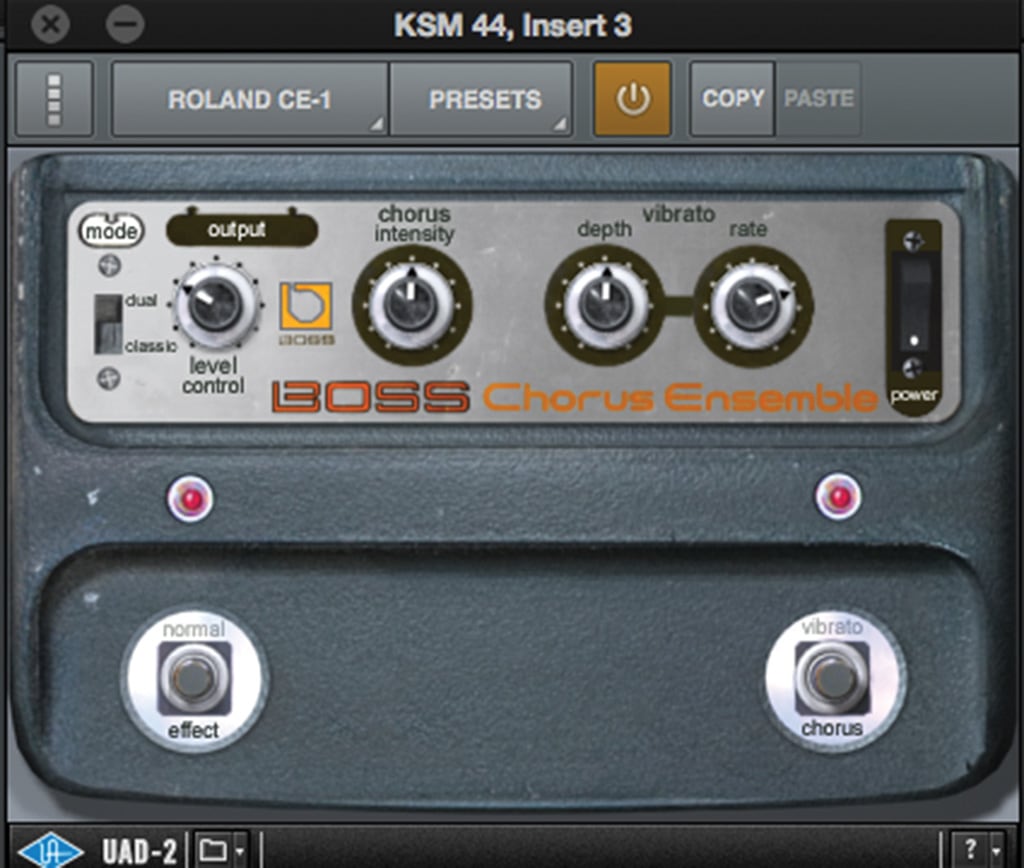
SCREAMING TO THE END
It was all high fives after the initial parts were down. It took a couple of days, but they had a real direction to the track. Wanting the chorus to be less angular, they both took up their instruments; Ecca started singing a chanting part while Buxton followed along with a guitar in his hands trying to shape the chords underneath.
Ecca mostly used a Shure SM7 dynamic mic to record her vocals, especially “the heavier vocals,” she said. “It’s quite versatile. We also used the Shure KSM353 ribbon mic, which was really beautiful for Cold of the World. Future Heroine was the only one I recorded externally, which was written in New Zealand’s Roundhead Studios at the APRA song hub, and we kept the demo vocal recorded on a Neumann.” To give the vocals a bit of extra cut, the pair always tend to use a touch of UAD’s Raw Distortion pedal, which is an emulation of a Rat. “It sounds unreal and we always print the effect when we take mixes to Haydn,” said Buxton. “It also gives E a bit of extra cut in her headphone mix for tracking. We then commit to the sound if the song requires it.”
The backing vocals are a free for all, Ecca uses them as a vehicle for specific emotional ties. In Broke Days, Party Nights “they almost sound like they’re taking the piss,” said Buxton. “It adds a bit of humour to it. In the pre-chorus she added these backing vocals — oh-oh-oh — which gave it this cool spooky vibe.”
Sometimes if it’s a driving beat we’ll be a bit more towards the grid, but it’s never quantised because I don’t think it sounds human
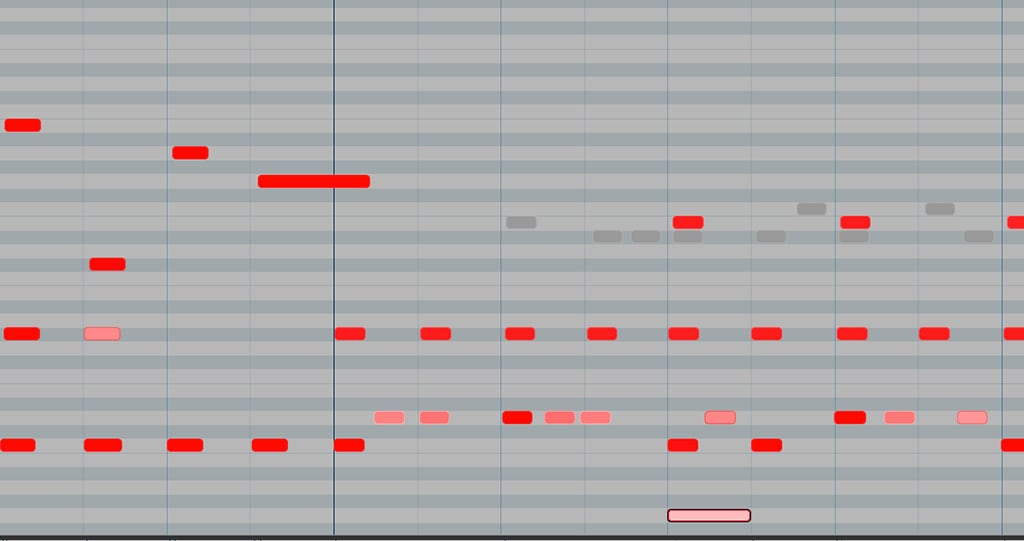
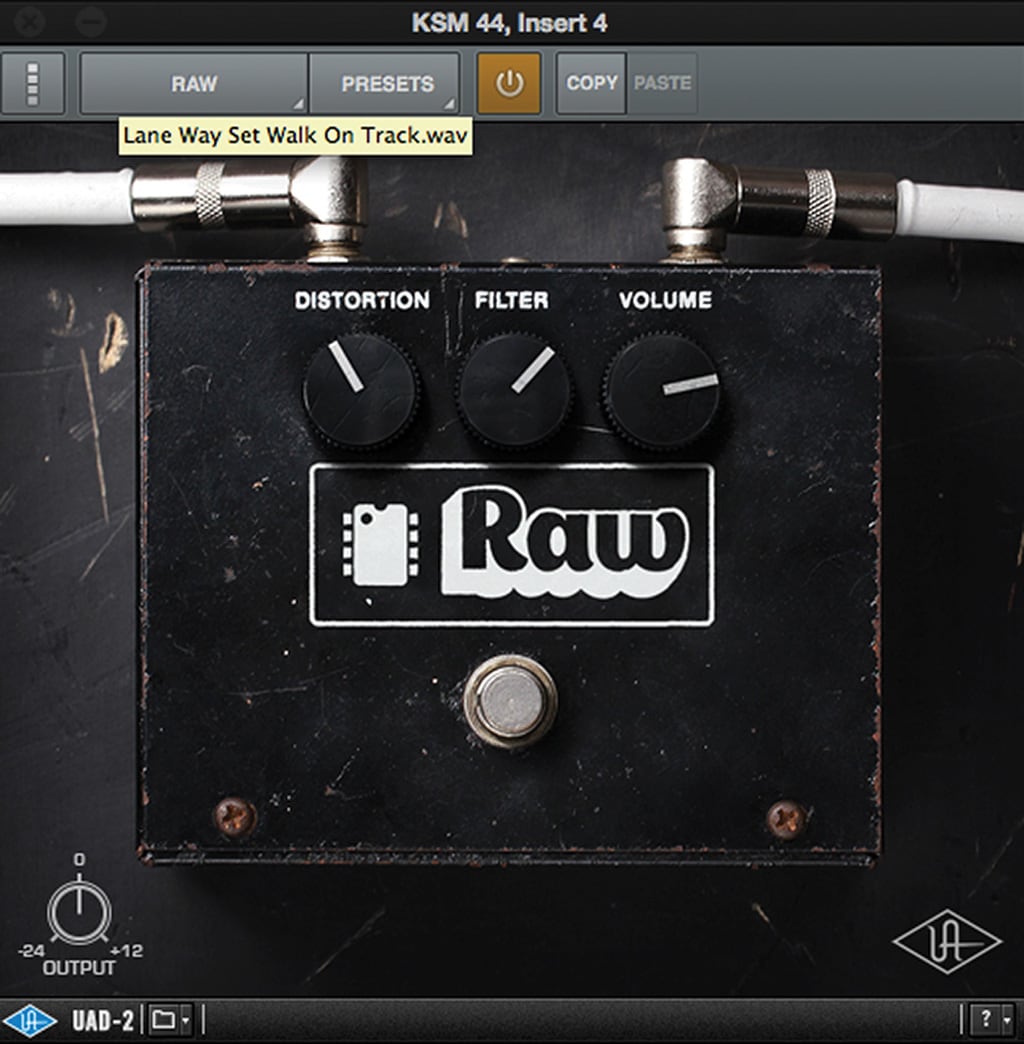
The last part of the song to come was the bridge. It starts with a overdriven bass line, “the Moog, which had a bit of Soundtoys Radiator on it,” said Buxton. “We got the drums to have that head nod feel, with toms going along with hats, go figure. Then I jumped on a lot of synths and made those alien noise sound effects. We wanted it to be a bit nasty, dirty and psychedelic. E went off in the corner in her own world and just started spitting a rhythm. Then we were like, ‘How do we get back to the chorus?’”
“We just went horror!” said Ecca.
“She does this massive scream,” continued Buxton, describing a true blood-curdler that goes almost two measures. “The only baffling we had was a doona, so she was under there, but it didn’t do s**t. Our neighbours thought she was either murdering someone or getting murdered.”
“The amount of times we’ve had all our neighbours knocking on our door saying, ‘Can you guys keep it down, or are you ok?’” laughed Ecca. “I’m screaming at the tops of my lungs.”
Ecca is a true vocal chameleon. One minute she can go from rapping to the spritely snarliness of Gwen Stefani, to beautiful chill wave enchantment in Cold of the World “I don’t feel constricted at all,” she explained. “What I want to achieve is being fearless but vulnerable at the same time. I made it really hard to sing live. It’s a brutal live set. It keeps me interested, too; it can challenge me having to sing with different vocal qualities and push myself to areas I haven’t tried before.”
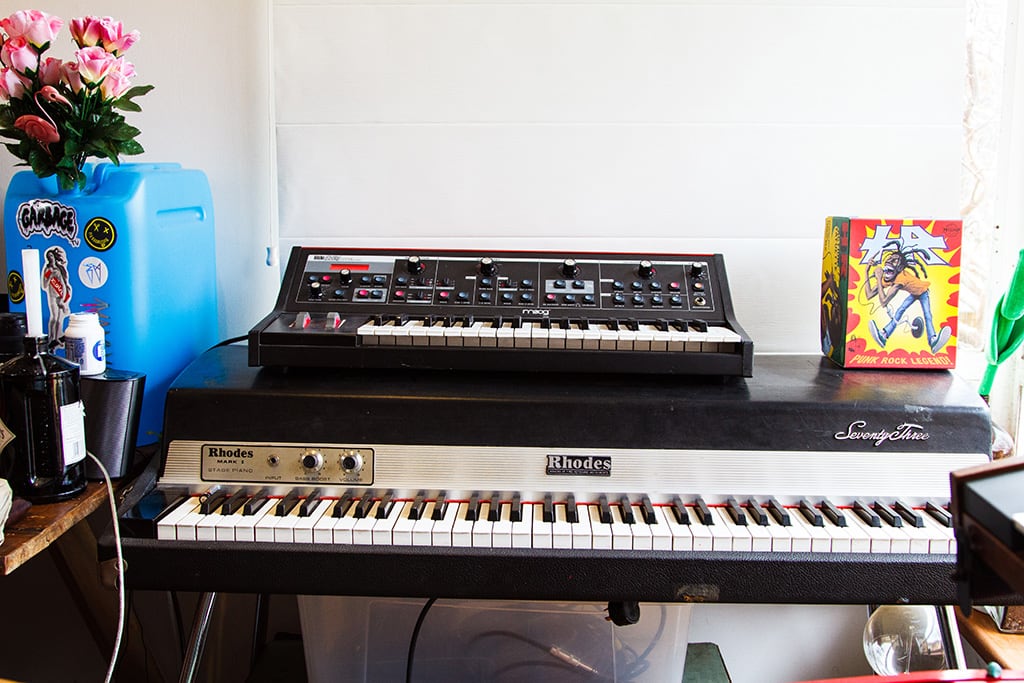








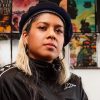















RESPONSES